Material
PORON®
Microcellular urethane foam with excellent mechanical properties for industrial sealing, vibration dampening, and cushioning
Microcellular urethane foam with excellent mechanical properties for industrial sealing, vibration dampening, and cushioning
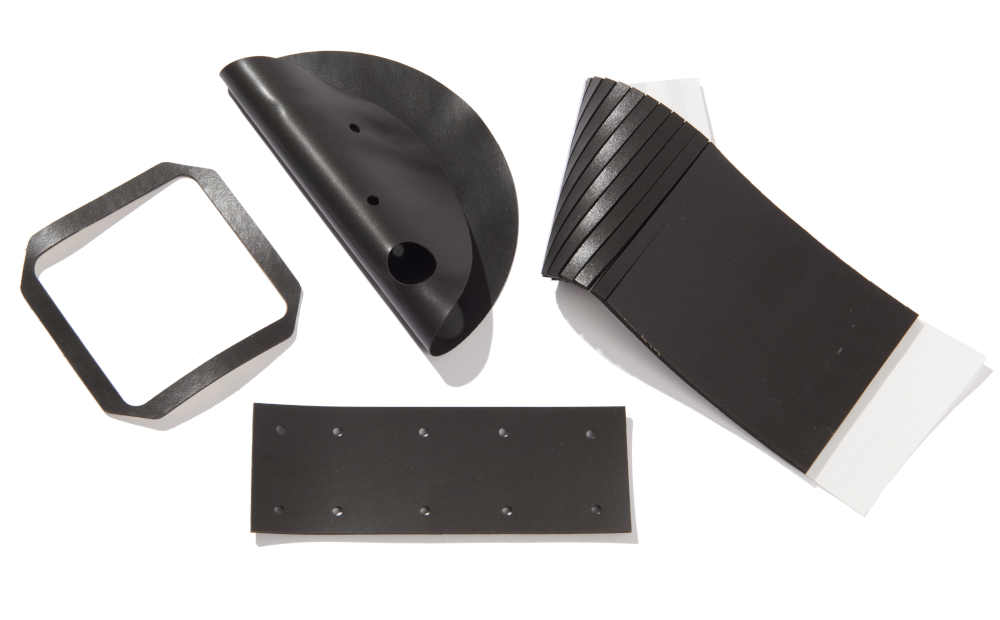
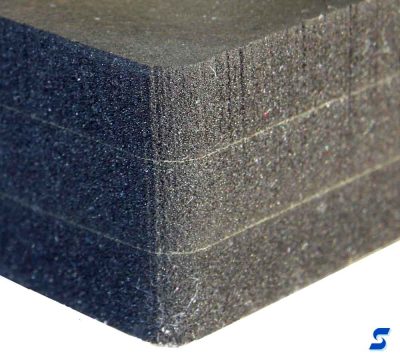 PORON® microcellular urethanes have been a major portion of Stockwell Elastomerics’ product line since Rogers Corporation developed this microcellular urethane foam for industrial and electronics applications in the 1980s. Stockwell Elastomerics inventories and fabricates PORON polyurethane in thicknesses from .012″ to .500″ thick and compressibility ranging from extra soft / slow rebound formulas to very firm formulas.
PORON® microcellular urethanes have been a major portion of Stockwell Elastomerics’ product line since Rogers Corporation developed this microcellular urethane foam for industrial and electronics applications in the 1980s. Stockwell Elastomerics inventories and fabricates PORON polyurethane in thicknesses from .012″ to .500″ thick and compressibility ranging from extra soft / slow rebound formulas to very firm formulas. Rogers Corporation manufactures PORON industrial polyurethanes and Stockwell Elastomerics is a Preferred Converter for Rogers Corp and a leading authorized PORON supplier / PORON distributor. On the basis of total material laminated and fabricated in production, Stockwell Elastomerics fabricates more PORON into gaskets than any other material family.
Rogers Corporation manufactures PORON industrial polyurethanes and Stockwell Elastomerics is a Preferred Converter for Rogers Corp and a leading authorized PORON supplier / PORON distributor. On the basis of total material laminated and fabricated in production, Stockwell Elastomerics fabricates more PORON into gaskets than any other material family.
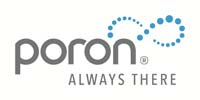
PORON is a fine pitch open cell urethane foam produced by Rogers Corporation. The uniform, microcellular structure allows PORON to be easily compressed for dust seals and cushions. Water sealing with PORON is possible in applications with proper compression and moderate water exposure. The average cell size of PORON foam is approximately 100 microns.
 Rogers’ PORON microcellular urethane foam was engineered to have excellent memory (compression set resistance). The compression set resistance of PORON makes it a top pick for sealing and cushioning electronics. PORON urethane foam is manufactured by continuously casting and curing mechanically mixed formulas to the desired thickness.
Rogers’ PORON microcellular urethane foam was engineered to have excellent memory (compression set resistance). The compression set resistance of PORON makes it a top pick for sealing and cushioning electronics. PORON urethane foam is manufactured by continuously casting and curing mechanically mixed formulas to the desired thickness.
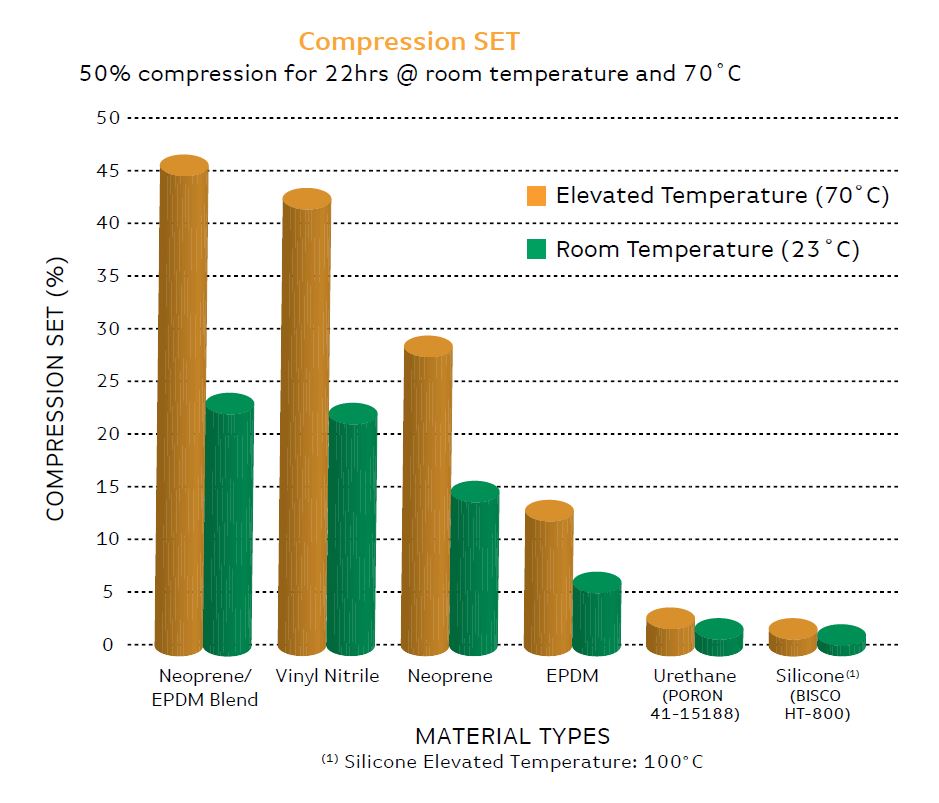
Visit the PORON Data Sheets page or view the PORON products overview data sheet (PDF) for detailed technical information on each PORON product.
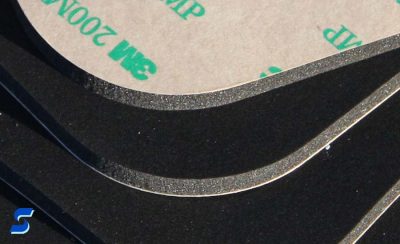
In addition to being a Rogers Corporation Preferred Converter, Stockwell Elastomerics maintains inventory of the 4701 and 4790 PORON foam families. As a preferred PORON supplier and manufacturer of PORON gaskets and pads, Stockwell Elastomerics helps engineers select the best PORON for their specific application.
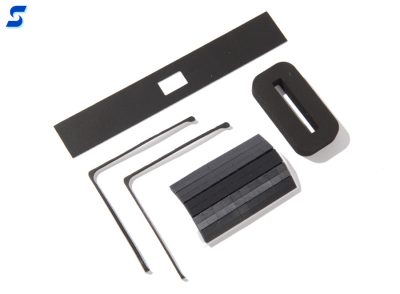
Includes small samples of PORON materials to touch and feel.
PORON has a unique naming convention for identifying each specific grade. Below is an explanation of the Rogers PORON naming convention and how to callout PORON microcellular urethane foam on a drawing.
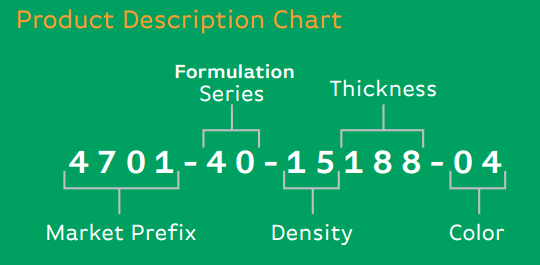
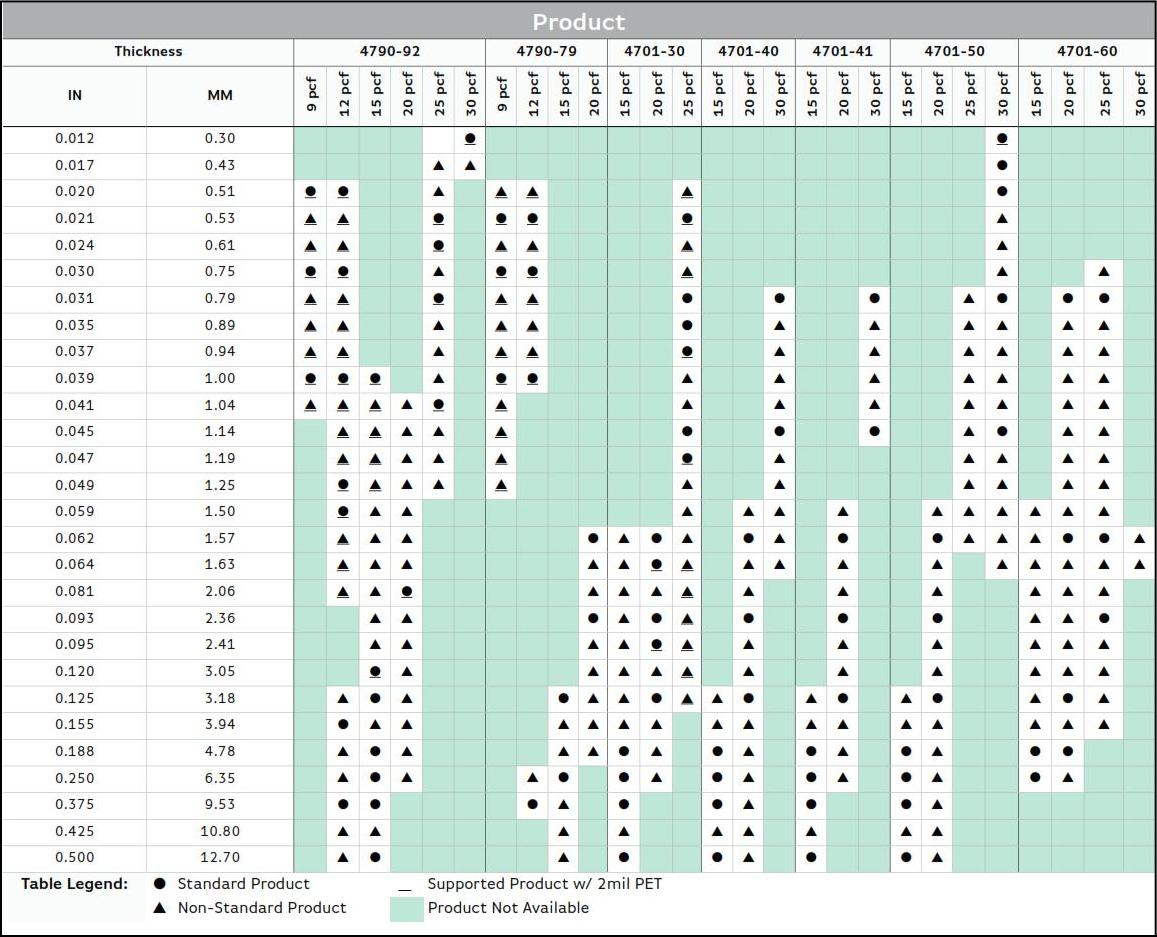
Visit the PORON Data Sheets page for detailed technical information on PORON polyurethanes.
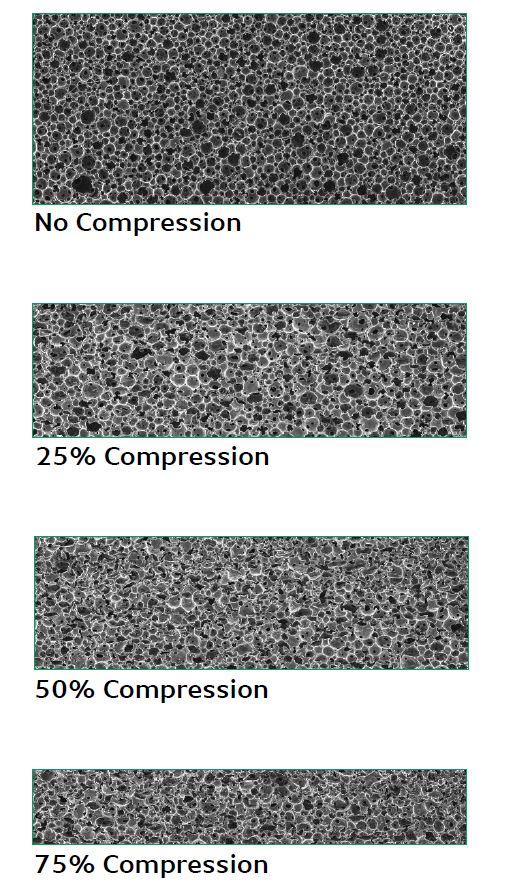 How Much to Compress PORON Foam?
How Much to Compress PORON Foam?The answer to “how much to compress PORON foam” is – it depends. If PORON is being used for a dust seal, minimal compression is needed (assuming standard pressure). Usually for light water sealing such as splashing, 50 – 60% compression is a general range. While PORON is not typically Stockwell Elastomerics’ first choice for outdoor or heavy water exposure, it can be used when the compression range would be 60 – 70% to collapse the open cells (see images). Outdoor sealing is usually better served using a more UV and temperature stable material with a closed cell structure, so quite often Roger’s HT-800 silicone foam is specified.
The amount of pressure required to compress a PORON pad or PORON gasket can be estimated using compression force deflection curves such as the one below. The area (in2) is the area of the gasket or pad under compression. Click here for PORON compression curves.
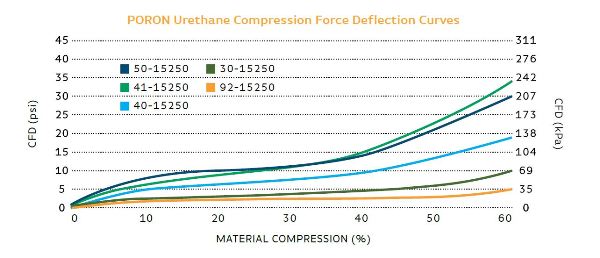

PORON AquaPro is low outgassing, low compression set microcellular polyurethane foam with enhanced water sealing. Made in two formulations, 4701-37 very soft and 4701-41 soft, the AquaPro family of PORON foam offers better water sealing properties that the standard Poron foam grades. PORON AquaPro 4701-41 has been Stockwell Elastomerics’ recommended grade of PORON for applications requiring extra protection from water ingress. As with all open cell and modified closed cell foams, Stockwell Elastomerics recommends proper compression on the gasket to ensure a good seal, this is particularly important for wash-down or heavy water exposures. As will all PORON urethane foams, the AquaPro family shares the same excellent compression set resistance (rebounds very well) as the standard grades.
For more information on these materials, view the PORON AquaPro product information sheet.
Despite the microcellular structure which appears to be closed cell, PORON is an open cell foam. Outdoor enclosures that are subjected to rain and temperature extremes may not be sealed properly with PORON gaskets. Conditions where PORON may be flexed or repeatedly compressed and relaxed in standing water may cause water to be wicked into the gasket. Temperatures below -20°F will cause PORON to stiffen noticably, and PORON is not recommended for constant temperatures above 158°F. Outdoor conditions may be better served with silicone sponge or high grade neoprene or EPDM sponge materials.
Stockwell Elastomerics sells PORON polyurethane foam as pre-cut parts or uncut sheets / rolls; 3M and Adchem adhesive backings are readily available. Most PORON parts manufactured by Stockwell Elastomerics have peel and stick backings to aid in processing and reduce assembly time. For assistance with selecting which PORON product to use, contact Stockwell Elastomerics’ Applications Engineers.
Contact Us for further assistance with PORON microcellular urethane foam products. Stockwell Elastomerics is a Rogers Corporation Preferred Converter and one of the leading authorized PORON suppliers / PORON distributors in the USA.